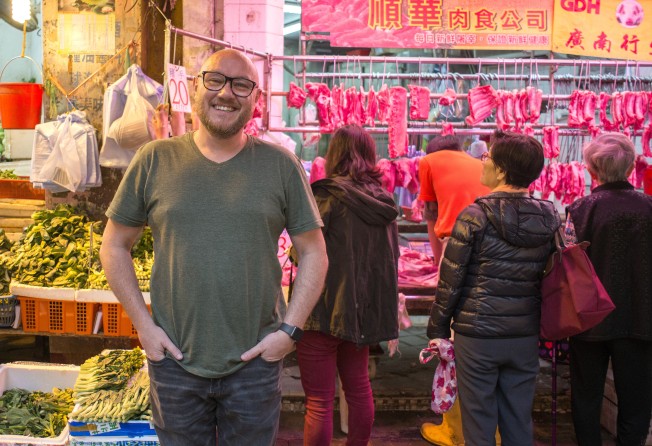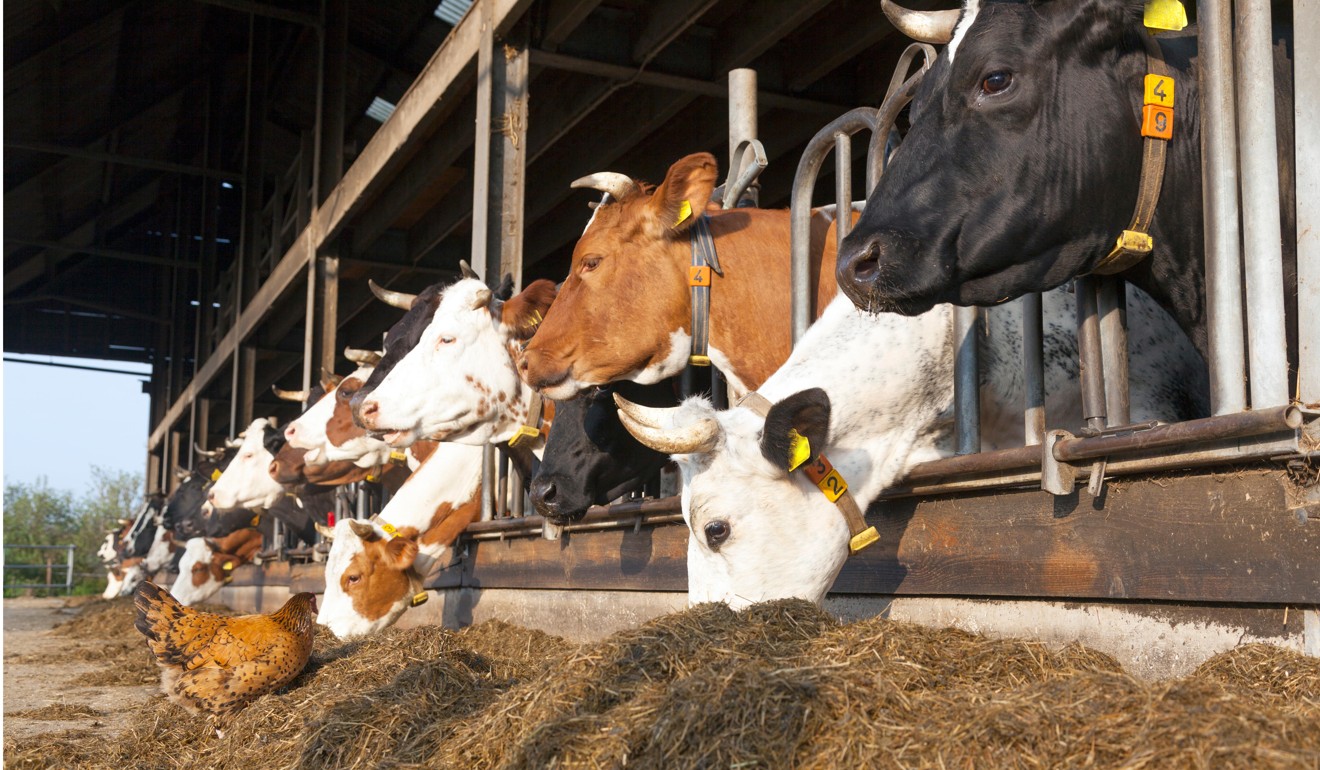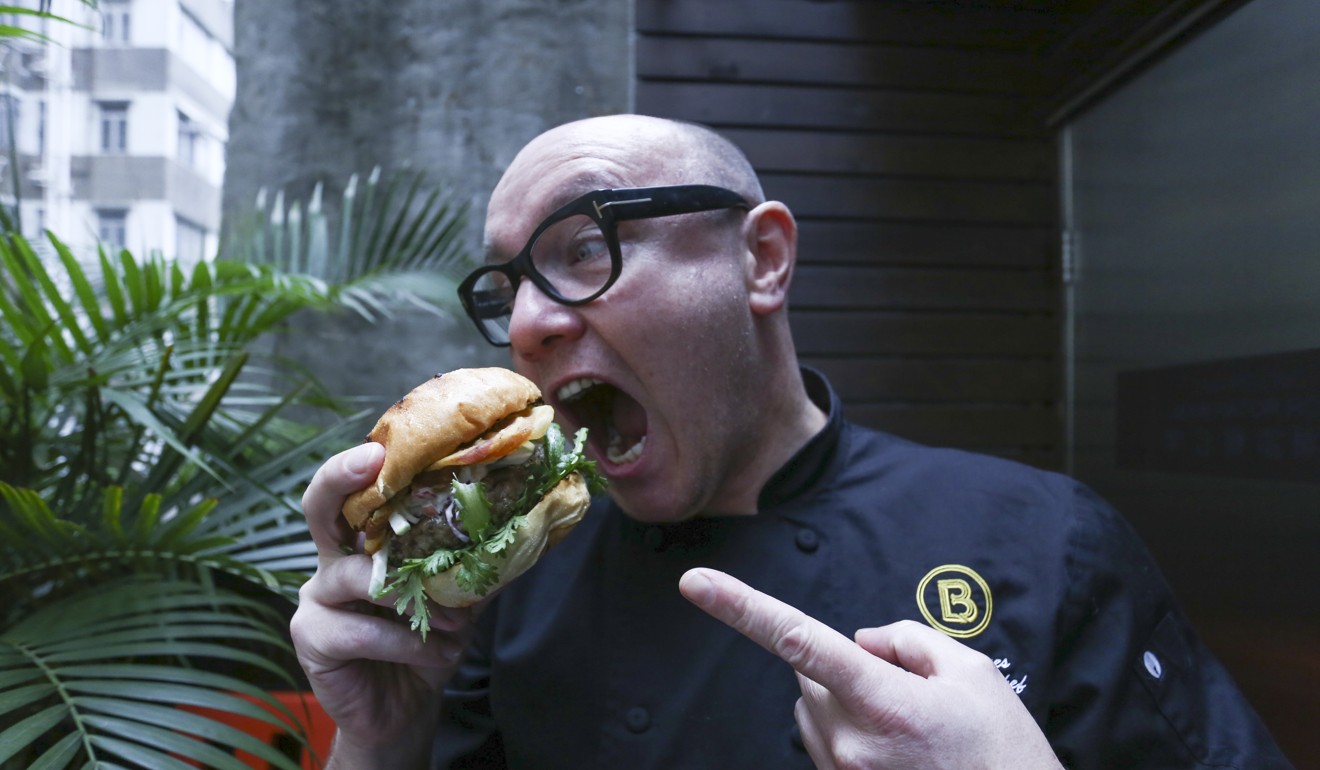
Why a Hong Kong meat-loving chef turned vegan – and the benefits he is feeling already
Two months ago Neil Tomes decided to drastically change his diet after he saw the impact meat eating was having on the environment and the way animals were treated. Now he’s a changed man and plans to show this in his menus

Just as the Year of the Dog started, Neil Tomes decided to change his diet overnight. The chef who has relished working with meat at Hong Kong restaurants Alfie’s, Beef and Liberty and, most recently, Mavericks – has gone vegan.
The 47-year-old from Liverpool, UK, who has lived on and off in Hong Kong for more than a decade, has thought a lot in recent years about the food we eat, how it affects the environment, and the ethical treatment of animals. He knew he had to do something drastic.
“I can buy chicken cheaper than broccoli. How does that work?” he asks, explaining chickens need to be bred, fed, housed, slaughtered, de-feathered, gutted and broken down into different parts. Yet they cost less than broccoli which requires digging holes in soil, sowing seeds, and once the head has grown, having someone cut the cruciferous vegetable and pack it.
“There’s something really twisted in the system,” he observes, having watched the documentaries Cowspiracy, Food, Inc., Forks Over Knives, and What the Health. The message in these documentaries about how the rearing of animals has contributed massively to global warming and land deforestation was the biggest catalyst for Tomes to go vegan.

There are many statistics regarding the amount of feed needed to produce a kilogram of meat. According to the United States Department of Agriculture, with cattle in feedlots, it takes roughly 7kg of grain to produce a 1kg gain in live weight. For pork, the figure is close to 4kg of grain, for poultry it is just over 2kg, and for herbivorous farmed fish species such as carp, tilapia, and catfish, it is less than 2kg. Tomes says this is an inefficient way of making food, especially when you consider the effort in herding animals into factories and injecting them with synthetic growth hormones and excessive amounts of antibiotics.
Until he watched the films and started doing his own research, Tomes’ lifestyle was all about meat. Growing up in Liverpool, he ate sausage rolls, spaghetti bolognese, hamburgers, and a meat and vegetable stew called “lobscouse” that is a speciality in his hometown. During his career as a chef, he handled a lot of meat, making dishes like steak and kidney pie at the now closed Alfie’s and hamburgers for Beef and Liberty.

Three years ago he went to Hungary to visit a national park that rears mangalica or mangalitza pigs, that have an old-fashioned layer of fat and look startlingly like sheep. While there with food supplier Bennet Lee Jun-yu of Heritage Foods, the two of them had to slaughter a pig with a knife, and an hour later they feasted on the blood stew the chef made.
“That to me is a more honest way of eating that we completely lost,” Tomes reflects. “I still ate meat after that but I certainly didn’t consume it in large quantities.”
When it comes to Asian food, from a bowl of noodles, to dim sum or dumplings, Tomes says they invariably have meat in them but consumers don’t know where the meat, typically pork, is from.

“Locals don’t really care; there isn’t a mass movement to know and care where they are getting the best quality pork. That is probably because there isn’t a lot of information out there,” Tomes says. “If you tell Asians something is unhealthy for them, they stop eating it. If you tell them red wine is healthy, the sales of red wine is up 300 per cent in four years. If you tell them they will make more dynamic changes.”
It’s only been about two months [since around February 16] but already Tomes reports losing some weight and feeling more positive and energised. “I feel less bloated, I feel more clean and less clouded mentally. I’m really motivated by this. I do believe this is something we have to do and something to strive towards.”
Last year Tomes became the chef and owner of Mavericks in Pui O on Lantau Island that was previously known for its burgers, hot dogs, fish and chips, and nachos. He revamped the menu, phasing out some of the meat items with healthier items like spiced cauliflower salad, seared tuna salad, and vegetarian breakfasts.
If you tell Asians something is unhealthy for them, they stop eating it
Since turning vegan, he has been experimenting with ways to make meat options vegetarian or vegan. One menu item he plans is veggie cheese fries. He wants them to be so delicious that no one will notice they are vegan.
An ingredient he is keenly interested in is fermented tofu for its intense flavour. “I want to play around with it to make it resemble the cheese or sour cream profile. There’s a tendency for those flavours to be prevalent in Asian cooking. There’s loads of experimentation I need to do,” he says.
Tomes was also recently inspired on a trip to Vietnam where he was impressed by the variety and quantity of vegetables in the supermarket. “I go to the wet markets here and I get bored sometimes,” Tomes says. Nevertheless he is keen on developing vegetarian dishes that have interesting textures and flavours, along with fermented drinks like kefir and kombucha. He aims to have a new menu at Mavericks for the beginning of summer.

In the meantime Tomes will continue to handle meat, though not as much as he used to. “Grass fed beef versus corn-fed beef. How much land is being used to feed cows? There’s definitely a balance we’ve lost that we need to find again,” he says.
“Apparently in the last 10 years, half a billion less animals were slaughtered than in the previous 10 years even with a growing American population. Vegans have increased 300 per cent in the last 10 years.
“We can’t feed all the people meat. We can’t feel good about keeping animals in the environments they are in. I cannot live in a world where chicken costs less than broccoli. It’s nuts.”